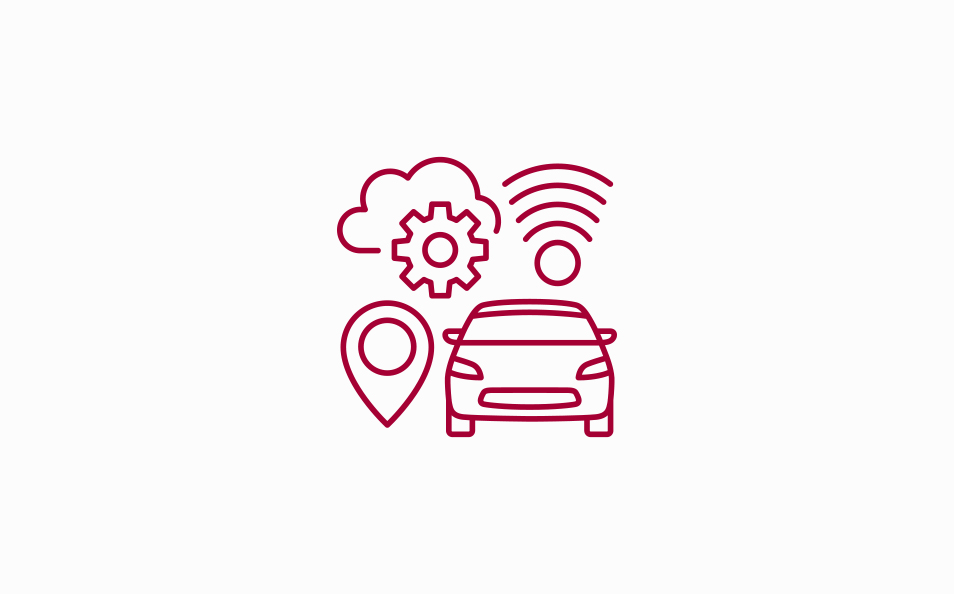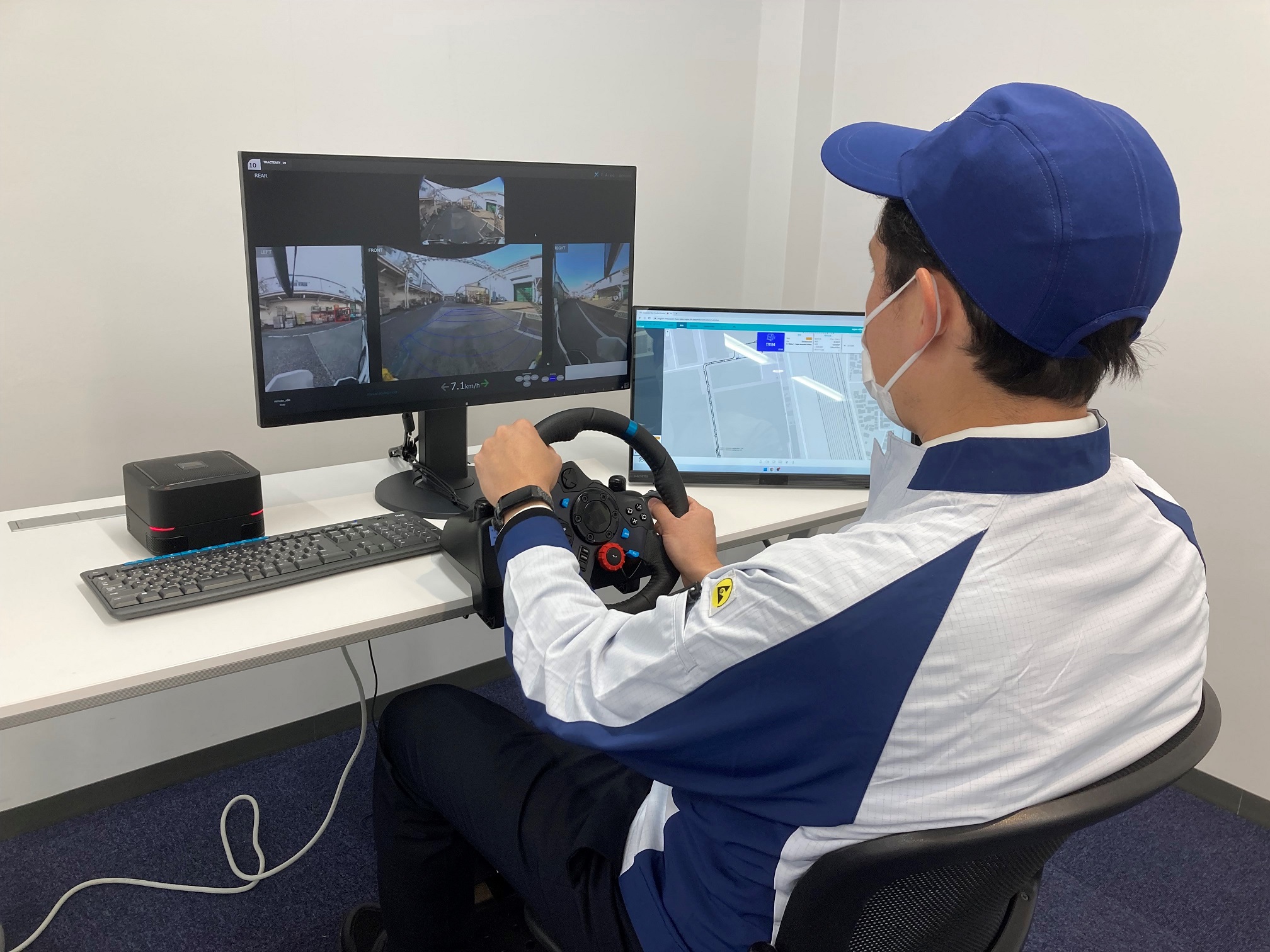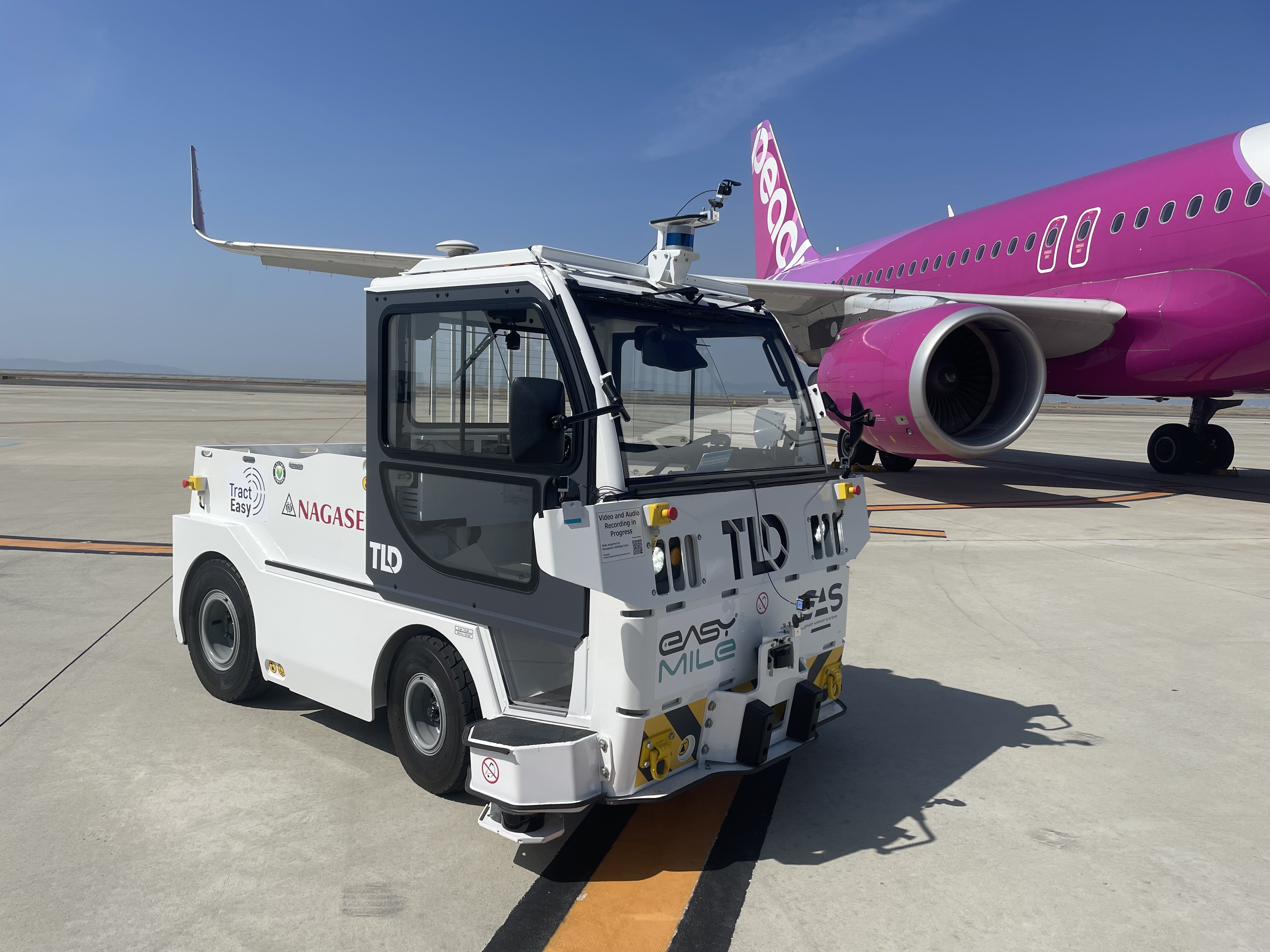

- MaaS
- Global
Proposal for Autonomous Towing Vehicles and Remote Operation Platform Service in Collaboration with Panasonic Holdings Corporation and EasyMile
NAGASE, in collaboration with Panasonic Holdings Corporation ("Panasonic HD") and EasyMile, is tackling the various challenges in the logistics industry, including labor shortages stemming from factors such as aging populations and the "2024 problem." We are utilizing autonomous towing vehicles and remote operation technology to address these challenges and find solutions.
The Issue
Driver Shortage in the Logistics Industry
In Japan, the aging population is causing a significant decline in the working-age population, with the Ministry of Internal Affairs and Communications projecting a 30% decrease by 2050 compared to 2021. This decline is leading to a severe labor shortage, especially in the logistics sector, where it is already a major challenge.
Additionally, the implementation of workstyle reform laws in 2024 is expected to worsen the shortage of drivers. Some estimates suggest that by 2030, transportation capacity could fall short of demand by 20%.This is known as the "2024 problem," which poses a significant issue in the future of the logistics industry.
The Solution
A Platform Service Using Autonomous Towing Vehicles and Remote Operation in Collaboration with Panasonic HD and EasyMile
To address the challenges of labor and driver shortages, particularly in the logistics industry within factories and distribution centers, NAGASE, in collaboration with Panasonic HD and EasyMile, proposes a platform service utilizing autonomous towing vehicles and remote operation.
EasyMile, founded in 2014 in Toulouse, France, and now with bases in Denver, Colorado USA, Singapore, and Adelaide, Australia, is a leading startup in autonomous driving software globally. The autonomous towing vehicle "TractEasy" is designed, developed, and manufactured by EasyMile.
In this context, "autonomous driving" refers to the stage where predefined fixed routes are continuously followed. During operation, LiDAR (high-altitude altitude laser sensor) and cameras are activated for safety, serving as substitutes for human eyes and ears. TractEasy is equipped with LiDAR in five locations, including the front of the vehicle and the ceiling, scanning buildings up to 200 meters ahead, as well as people, vehicles, and obstacles within a close range of 50 meters, enabling it to make decisions such as avoidance. It incorporates precise positioning technology at the centimeter level, V2X wireless communication connecting vehicles and infrastructure, predictive control, and navigation systems for intersection and crosswalk judgments.
For remote control, Panasonic HD has developed the X-Area Remote system (X-Area Cross Area is a registered trademark of the company), enabling remote operation from offices away from the running route. If the vehicle encounters obstacles where autonomous driving is not possible, human operators can remotely monitor and control operations as needed, reducing downtime.

In Japan, large-scale in-field testing has been conducted at factories and airports of Peach Aviation Limited, to verify the safety, driving performance, operability, and practicality of TractEasy system.

In Japan, the amended Road Traffic Act and Road Transport Vehicle Act allowed Level 3 equivalent (conditionally automated) driving of private vehicles on public roads from April 2020. This was expanded to include buses and trucks in November 2021, representing a gradual advancement in the amendments.
The world of autonomous vehicles will continue to accelerate and evolve. NAGASE continues to conduct further verification experiments and propose services to address labor shortages and reduce workload in cargo transportation and logistics settings at factories, airports, and ports, working to solve future challenges in the logistics industry.